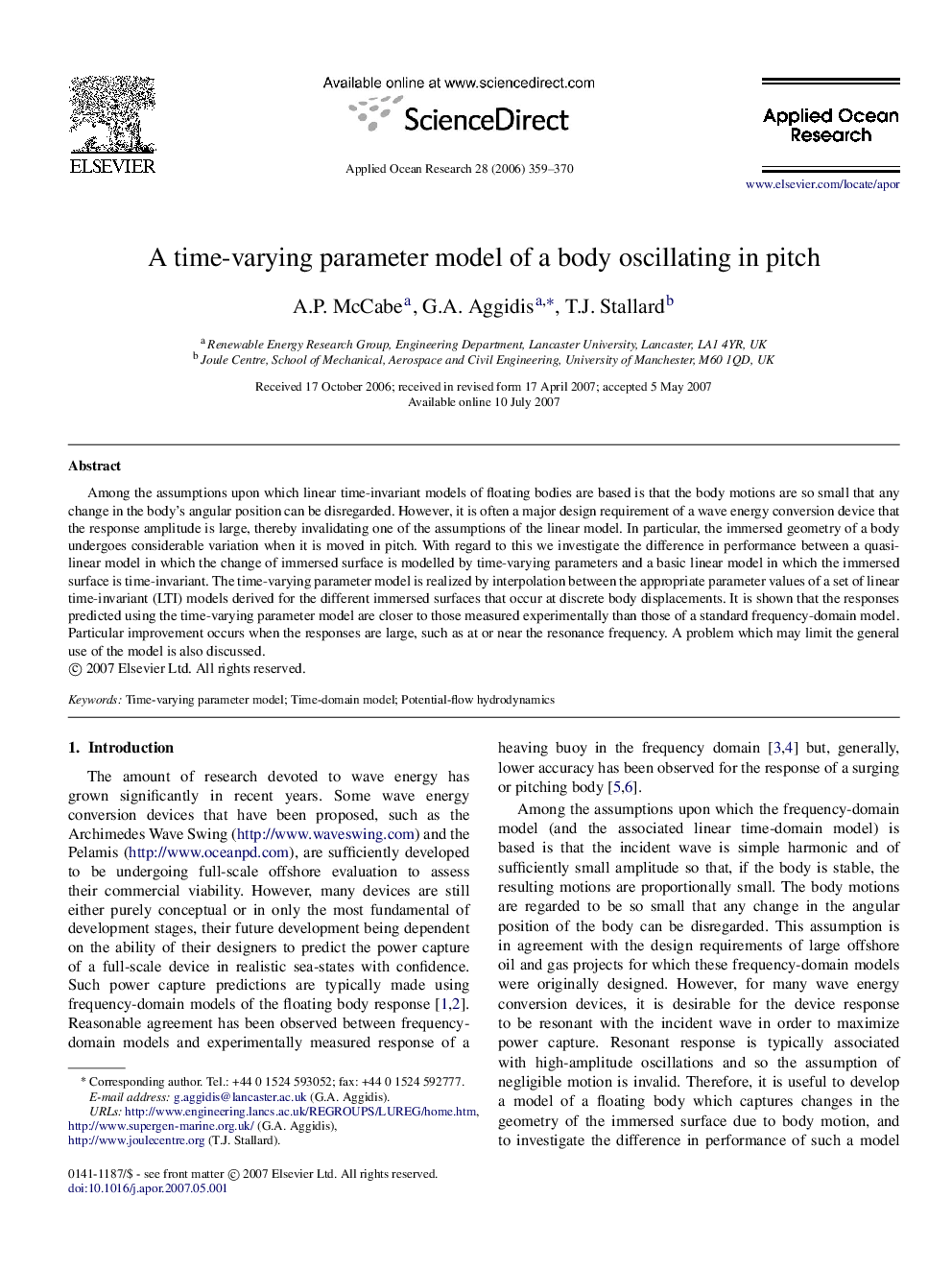| Article ID | Journal | Published Year | Pages | File Type |
|---|---|---|---|---|
| 1720492 | Applied Ocean Research | 2006 | 12 Pages |
Among the assumptions upon which linear time-invariant models of floating bodies are based is that the body motions are so small that any change in the body’s angular position can be disregarded. However, it is often a major design requirement of a wave energy conversion device that the response amplitude is large, thereby invalidating one of the assumptions of the linear model. In particular, the immersed geometry of a body undergoes considerable variation when it is moved in pitch. With regard to this we investigate the difference in performance between a quasi-linear model in which the change of immersed surface is modelled by time-varying parameters and a basic linear model in which the immersed surface is time-invariant. The time-varying parameter model is realized by interpolation between the appropriate parameter values of a set of linear time-invariant (LTI) models derived for the different immersed surfaces that occur at discrete body displacements. It is shown that the responses predicted using the time-varying parameter model are closer to those measured experimentally than those of a standard frequency-domain model. Particular improvement occurs when the responses are large, such as at or near the resonance frequency. A problem which may limit the general use of the model is also discussed.
